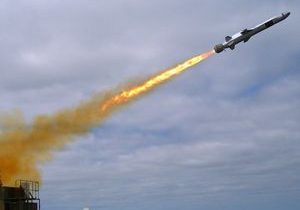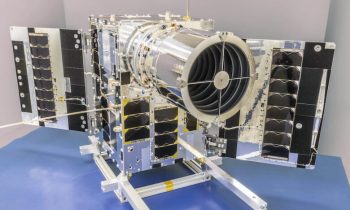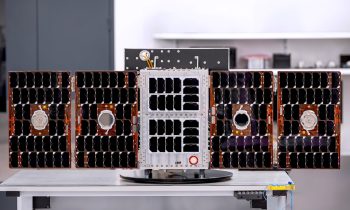 The US Navy is focused on a major shift in its maritime strategy.
The US Navy is focused on a major shift in its maritime strategy.
With global threats mounting, our Navy is implementing “distributed lethality,” a vision that will enable forces to operate in a dispersed, often autonomous manner.
As US Navy Vice Adm. Thomas Rowden recently explained, spreading firepower throughout our fleet will confound our enemies, “confusing their intelligence-surveillance-reconnaissance capabilities and diluting their weapons-planning and targeting.”
Maintaining America’s maritime dominance is an investment we must make now. China is methodically ramping up its navy, which is expected to be larger than America’s by the end of the decade.
But executing the strategy will require rapidly upgrading many weapons systems, particularly our over-the-horizon, anti-ship missile. In its search for one of these weapons, the Pentagon has a choice: undertake a costly and time-consuming process of trying to upgrade existing antiquated systems; or deploy a cutting-edge, field-tested replacement. The choice is clear.
The search for the next must-have missile began last summer when the Navy issued a request for information to manufacturers.
The Navy’s current weapon, the venerable Harpoon missile, has been in use since the late 1970s. Despite numerous upgrades, it remains outdated. For instance, the Harpoon can be easily detected, tracked, deceived and destroyed by existing high-tech defense systems. Additionally, Harpoon has difficulty locating its assigned target, particularly when other ships are nearby.
One candidate that has since emerged is the Long Range Anti-Ship Missile. Better known by its acronym, LRASM, this weapon is essentially a modified version of the Air Force’s Joint Air-to-Surface Standoff Missile.
Unfortunately, there are serious drawbacks to this option. A recent report from the Government Accountability Office discovered numerous shortfalls with LRASM. Specifically, the agency concluded that several critical elements of the missile were not fully developed.
Further, LRASM is still years away from completion. When all is said and done, developing this air-launched weapon technology will cost $2.6 billion. LRASM is also a heavy weapon — a trait that limits which ships can use it. What’s more, the Navy has no plans to deploy the LRASM before 2019. That’s too long to wait.
Fortunately, there is a high-tech missile that is available today to replace Harpoon: the Naval Strike Missile, or NSM. Developed by Norway at a cost of more than $1 billion, NSM represents a chance for the United States to save money while fielding a state-of-the-art weapon.
It has been deployed since 2012 and even been test fired from the littoral combat ship Coronado off the coast of California. It also boasts a highly successful operational test track record, not just in Norway, but also from truck-mounted test firings conducted by the Polish Coastal Defense Squadron.
Norway’s missile satisfies the US Navy’s current needs. It can autonomously detect and attack its assigned target. It’s also highly maneuverable and employs stealth technologies, allowing it to penetrate enemy defenses virtually undetected. And since NSM contains an extraordinarily accurate inertial navigation system, it doesn’t require GPS.
Moreover, this new system is well-suited for the congested battle spaces the United States is likely to face in the future. Its intelligent imaging infrared seeker has a capability equivalent to “facial recognition” for specific ship classes. In other words, war fighters can fire the weapon into a crowded and contested maritime environment confident of striking the intended target without any collateral damage.
All of these features make the NSM an ideal weapon for advancing distributed lethality while avoiding the costs and delays that come with developing a new weapon from scratch.
The need for a more powerful, effective naval fleet has been growing for years. In the wake of the Cold War, America’s superiority at sea was mostly uncontested, prompting the Navy to shift focus to other areas, such as its ability to launch land attacks. But our nation’s maritime dominance can no longer be taken for granted.
Instead of spending valuable time and money on a new missile to replace the Harpoon, the US Navy can benefit from our ally’s investment in this battle-tested, ready-to-field system. In so doing, we can create a more versatile naval fleet with distributed firepower that this moment demands.
David Gibson is a defense systems program manager and a veteran of the US Navy.
(defensenews)



